Vigie-Nature École, a citizen sciences programme serving biodiversity
In schools, life sciences and diversity have been taught for a long time. Our parents, even our grandparents studied what we used to call “natural sciences”: the diversity of pond ecosystems, examples of food chains, the ABC of herbology, etc.
The concept of biodiversity goes far beyond “ecological-only” aspects of this term. Biodiversity loss, related to human activities and their social, economic outcomes, has replaced humans at the very heart of ecosystems. In fact, this term addresses all these biological, social and economic facets that we want to convey/to deliver to pupils, together with a modern and responsible education.
Anchoring this vision in the concrete and proximity is naturally a condition sine qua none to handle biodiversity with pupils, but above all to make them understand the different issues linked to its loss. By using media that only shed light on polar bears extinction, people risk spreading the message that biodiversity loss is a distant question without immediate consequences on pupils’ life and that we cannot address. On the contrary, going outside, in the playground or school yard to make them discover the rich diversity of plants or pollinating insects we can meet daily, even in restricted space, recreates the connection between pupils and nature. In a second time, addressing the question of actions they can take to promote biodiversity within and nearby their school allows pupils to become active and responsible players in their environment.
Vigie-Nature École, a simple way not only to approach biodiversity in class, but also to convince pupils they can act!
Launched in 2010, Vigie-Nature École is a citizen sciences programme that aims to monitor ordinary biodiversity. For teachers, it is an opportunity to participate in a research programme by taking part in a complete scientific process. As they participate in the protocols, the pupils learn more about the biodiversity around them and refine their observation skills.
This approach provides pupils with a great understanding of the scientific knowledge construction. The protocols we propose allow pupils to act, think and better conceptualize the world around them, notably by offering them various tools and skills to become enlightened citizens. Finally, the strong link with researchers makes pupils fully involved and to get more responsibilities.
For teachers, relying on such a citizen sciences programme is fully in line with the official instructions of the Ministry of Education. Indeed, observatories meet numerous items of school curricula as well as knowledge and skills common base. It is therefore a question of enabling the teacher to implement his or her teaching while offering new, motivating and cross-disciplinary activities.
Finally, by favouring an “outdoor” education, citizen sciences offer an alternative method to teach. Additionally, our programmes meet exceptional pupils’ needs. The teacher does not bring knowledge, but rather a process of co-construction: the pupil will discover it by himself. This position stimulates the interest of all pupils and therefore contributes to the academic success of all.
Click here to download our introductory booklet.
Comprendre les questions scientifiques à la base de Vigie-Nature
Vigie-Nature est un programme de sciences participatives ouvert à tous ! En s'appuyant sur des protocoles simples et rigoureux, il propose à chacun de contribuer à la recherche en découvrant la biodiversité qui nous entoure. Initié il y a plus de 20 ans avec le Suivi Temporel des Oiseaux Communs (STOC) créé en 1989, le programme Vigie-Nature s’est renforcé depuis avec le suivi de nouveaux groupes : les papillons, chauves-souris, escargots, insectes pollinisateurs, libellules, plantes sauvages des villes…. En offrant aux scientifiques des données de terrain essentielles, dans toute la France Les observateurs volontaires participent ainsi à l’amélioration des connaissances sur la biodiversité ordinaire et sur ses réponses face aux changements globaux (urbanisation, changement climatique…).
Vigie-Nature a pour objectif de répondre à des questions essentielles sur la biodiversité ordinaire :
- comment évolue notre faune et de notre flore commune ? Au-delà des espèces menacées (qui font l’objet d’autres études), quelles espèces sont plus abondantes ou au contraire quelles sont celles qui tendent à diminuer ?
- comment les espèces communes réagissent-elle aux différentes pressions d’origine humaine (urbanisation, intensification de l'agriculture...) ?
- quel est l’impact du changement climatique sur ces espèces ?
- y a-t-il une homogénéisation croissante, autrement dit, y a-t-il un déclin général des espèces spécialistes au profit de quelques espèces généralistes ? Cela a déjà été observé chez les oiseaux et les papillons, reste à analyser d’autres groupes, comme la flore, les chauves-souris, les escargots.
Pour répondre à ces questions, les scientifiques de Vigie-Nature s'appuient sur des suivis à large échelle et à long terme des espèces communes, grâce à des réseaux d’observateurs volontaires qui participent à la collecte de données dans toute la France, à partir de protocoles simples et peu contraignants.
A vous de commencer vos observations pour les aider !
